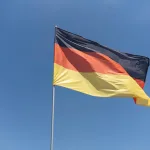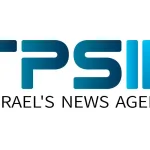- Business
Browse Business
- Technology
Browse Technology
Latest in Technology
Machine Learning Offers New Way to Predict Plant Water Use, Israeli Study Finds
5 minutes agoCyberDome Drill Highlights Growing Digital Threats to Israel’s National Systems
1 hour agoAfter Nova Massacre, Israeli Startup Builds Tech to Keep Families Connected in Crisis
4 hours agoFusion Control Breakthrough Brings Clean Energy Closer
4 hours ago - Politics
Browse Politics
Latest in Politics
Israel’s High Court Overturns Government’s Attempt to Remove Attorney General
2 days agoNegev Cities to Receive $31.8M Boost for Housing, R&D, and Airport Plans
5 days agoIsrael, Bolivia Restore Diplomatic Relations
6 days agoCyber Weaknesses Put Israeli Elections, Democracy at Risk, State Comptroller Warns
1 week ago - Security
Browse Security
Latest in Security
CyberDome Drill Highlights Growing Digital Threats to Israel’s National Systems
4 minutes agoAfter Nova Massacre, Israeli Startup Builds Tech to Keep Families Connected in Crisis
3 hours agoIranian Missile Fragments Become Symbol of Hope at Reopened Israeli Care Facility
1 day agoIran Suspected in Deadly Sydney Chanukah Shooting
2 days ago - Economy
Browse Economy
Latest in Economy
Israeli Exports on the Rise, Approaching Pre-War Peak
2 minutes agoTrade Momentum Builds as German Business Leaders Visit Israel
3 hours agoNegev Cities to Receive $31.8M Boost for Housing, R&D, and Airport Plans
5 days agoHaredi Enlistment Would Ease Army and Economic Strain, Bank of Israel Says
5 days ago - Crime
Latest in Crime
Iran Suspected in Deadly Sydney Chanukah Shooting
2 days agoIsrael’s Anti-Corruption Chief Investigated for Alleged Ties to Crime Network
6 days agoIsraeli Police Probe Fatal Shooting as Arab-Sector Murder Toll Climbs to 241
6 days agoIsraeli Authorities Charge Ashkelon Resident Over Months-Long Ties to Iranian Operatives
2 weeks ago - Society
Browse Society
Latest in Society
Iranian Missile Fragments Become Symbol of Hope at Reopened Israeli Care Facility
1 day ago‘Vile’: Israeli Leaders Condemn Deadly Sydney Chanukah Attack
2 days agoIsrael’s High Court Overturns Government’s Attempt to Remove Attorney General
2 days agoOne Dead, Dozens Rescued as Storm Byron Sweeps Across Israel
5 days ago - Services
Travel & Transportation
Technology & Utilities
Religious & Cultural
Information & Directories
Government & Public Services
- Breaking News
The New Israeli Shekel Up 9.3% Against US Dollar Fore Second Quarter of 2025
Jerusalem, 5 August, 2025 (TPS-IL) — The Bank of Israel reported that in the second quarter of 2025, the Shekel strengthened markedly, in view of improving investor sentiment after the events of Operation Rising Lion and the weakening of the dollar against major currencies worldwide. During the course of the quarter, the shekel strengthened by approximately 9.3 percent vis-à-vis the dollar and by 1.5 percent vis-à-vis the euro. In addition, the shekel strengthened by 6 percent against the currencies of Israel’s main trading partners, in terms of the nominal effective exchange rate (i.e., the trade-weighted average shekel exchange rate against those currencies).
Worldwide, the trend of dollar weakness continued, in view of the tension over the global trade war, and the continued lack of certainty over the US tariff policy. Among other things, the dollar weakened during the course of the quarter by 3.4 percent against the Japanese yen and by 7.8 percent against the euro
The average standard deviation of changes in the Shekel/Dollar exchange rate, which represents its actual volatility, increased by 3 percentage points during the quarter, to an average level of 11.1%.
The average implied volatility in over-the-counter shekel/dollar options —an indicator of expected exchange-rate volatility— increased by 1.1 percentage points during the quarter, to an average level of about 9.8% at the end of the quarter.
This is alongside the average level of implied volatility in foreign exchange options in emerging markets, which increased by 0.8 percentage points compared to the previous quarter, to 11.1% at the end of the quarter. In advanced economies, there was a moderate increase of about 0.8 percent in its average level, to about 9% at the end of the quarter.




















